The pH levels of the water in your aquaponic system is another important consideration. Aquaponic pH control is essential to the health of your fish, plants, and the bacteria colony that makes the whole system work. When the pH level is outside of an appropriate range, it can cause poor plant and fish growth and could even lead to the death of one or more of the living components of the system. To get your system up and running and keep the system operating at peak performance, you need to know what causes high pH in aquaponics, what causes low pH in aquaponics, and how you can balance the levels to maintain an appropriate range.
What is pH?
The term pH is commonly used in chemistry. It is a scale that specifies the hydrogen ion concentration in a liquid solution. Its numeric measurements are used to identify if a solution is an acid, a base, or considered neutral. Pure water has a neutral pH. When pH levels are within the range of eight to 14 or higher, it is considered alkaline and indicates basicity. If levels measure in the range of zero to six or lower, it indicates acidity. In all types of agriculture, including soil farming, hydroponics, and aquaponics, pH levels are important. They also play a role in aquaculture for the growth of the fish.
What pH Should I Target?
One of the challenges regarding the pH levels in an aquaponic system is that fish, plants, and bacteria do not all agree on the perfect level. Fish and bacteria tend to prefer a little more base whereas plants like a little more acid. This makes aquaponic pH control an important focus. To balance between the desires of your bacteria, plants, and fish you will need to target a neutral pH range. The ideal target pH range is between 6.8 and 7.2. A pH of seven is considered neutral. A little give to either side is okay, but too much base or acid can be detrimental to one or more of the living components of your system.
What Causes Low pH in Aquaponics?
The pH levels in your system will naturally lower over time. The nitrification process of converting fish waste into plant food has an acidifying effect on the water within the system. This is what causes low pH in aquaponics most frequently. It could also be caused by water you are using in your system. If your water has a lower pH level to begin with, it can cause problems as the nitrification process runs its course. It could also be related to the grow media, the material the aquaponic system is constructed from, or it could be related to the type of plants you are growing. Regardless of what has caused low pH within your system, it is important to bring it back to your target range because it can cause problems for your fish and your bacteria colony.
How to Raise pH in Aquaponics
Various methods can be used to organically raise pH in aquaponics systems. If the pH has dropped below a six, it is beneficial to do a water change. This will help replace the acidic water with more water that is more neutral. It will not fix the problem, but it should prevent immediate damage to your bacteria and your fish. Using an additive will assist in lowering the pH level and provides a better long-term solution. Shell grit is a popular and readily available additive that will work to raise and stabilize the pH level of your tank. Using a grow media that is slightly alkaline can also do the trick. Crushed limestone will accomplish this and makes a decent growth media for your plants. Limestone or lime can also be added to the water to improve the levels.
What Causes High pH in Aquaponics?
When the pH level of your system is too high, it can result in poor plant growth and poor fruit, vegetable, flower development. The higher the level, the bigger of a problem it presents for your plants. So, what causes high pH in aquaponics? The most common culprit is carbonate buildup in your system. This frequently happens because your water is hard, or it could be caused by the grow media you are using or even the material your tank or beds are made from. Limestone and concrete can contribute to carbonate in your water. High pH is also normal during system start-up. Until your bacteria colony is well-established and the nitrification process is working efficiently, carbonate can build up simply because there are not enough bacteria to use it all.
How to Reduce pH in Aquaponics
Several techniques can be employed to lower the pH level within your system organically. Allowing proper time for the establishment of the bacteria colony is one of the easiest ways to ensure a proper pH level during system start-up. This can be accomplished by gradually increasing the levels of ammonia until nitrite is being produced at a steady pace. Using a setup that provides plenty of biological surface area will also help, as this means more space for the bacteria. If your bacteria colony is already well established and pH is still higher than you would like, a reverse osmosis filter is an excellent investment. The filter will remove carbonates from the water, which will gradually lower the pH level. As an added benefit, the reverse osmosis filter will also capture other water contaminants and keep the water fairly pure and pH neutral. This makes it ideal for aquaponic pH control.
Maintaining a near-neutral pH level is important for the health of your entire aquaponic system. By using simple, organic methods like adding shell grit, you can easily raise pH in aquaponics systems if the levels are too low. Understanding how to reduce pH in aquaponics is equally as important, and can be done by increasing the size of your bacteria colony or installing a reverse osmosis filter. The pH level should be consistently monitored and adjusted as needed to ensure the system functions properly, the plants grow, and the fish and bacteria are healthy. Be sure that when you make adjustments to the pH level, you do so gradually, so you do not shock any of the living elements of your system.

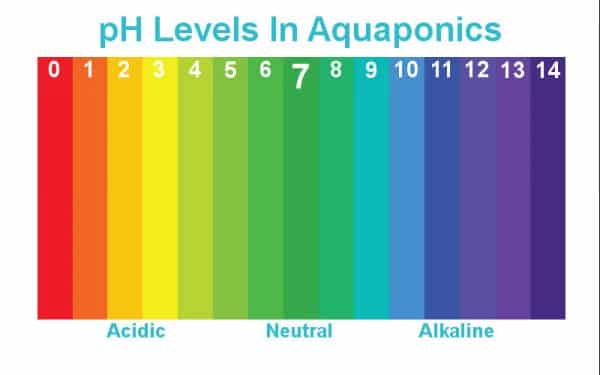





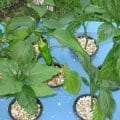


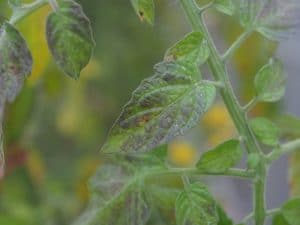


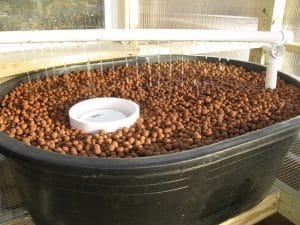
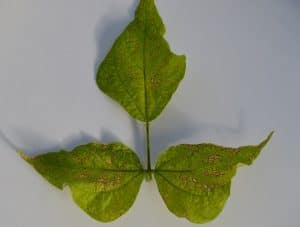
Leave A Comment